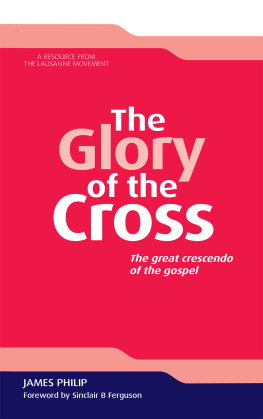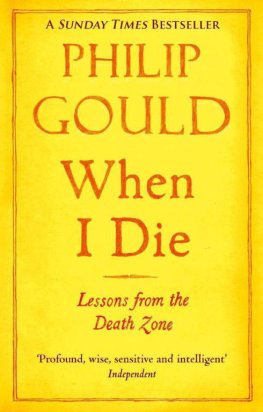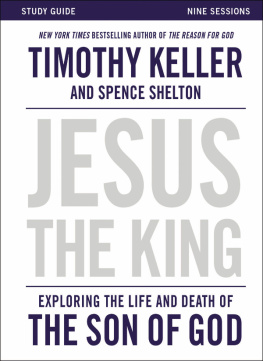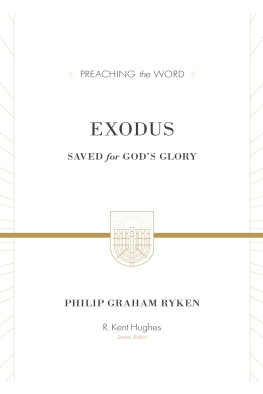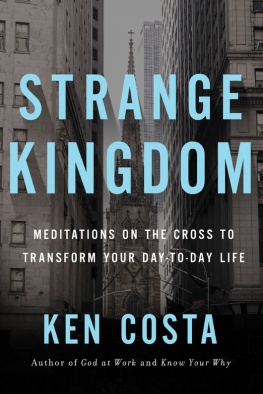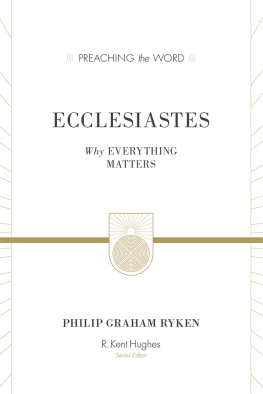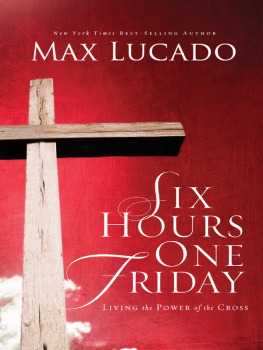The Glory of the Cross: Exploring the Meaning of the Death of Christ (eBook edition)
2008, 2015 by William J U Philip
Hendrickson Publishers Marketing, LLC
P. O. Box 3473
Peabody, Massachusetts 01961-3473
ebook ISBN 978-1-61970-718-4
All rights reserved. No part of this book may be reproduced or transmitted in any form or by any means, electronic or mechanical, including photocopying, recording, or by any information storage and retrieval system, without permission in writing from the publisher.
All Scripture quotations are taken from the New International Version, NIV. Copyright 1973, 1978, 1984 by Biblica, Inc. Used by permission of Zondervan. All rights reserved worldwide. www.zondervan.com. The NIV and New International Version are trademarks registered in the United States Patent and Trademark Office by Biblica, Inc.
This booklet, edited and expanded by kind permission, is based on sermons preached in Holyrood Abbey Church, Edinburgh, Scotland under the title The meaning of the death of Christ.
All royalties from this series will be used for publishing endeavours relating to The Lausanne Movement.
Due to technical issues, this eBook may not contain all of the images or diagrams in the original print edition of the work. In addition, adapting the print edition to the eBook format may require some other layout and feature changes to be made.
First eBook edition March 2015
FOREWORD
From time to time a publication appears, of modest size and author, its value greater than a whole bookshelf of contemporary bestsellers. The Glory of the Cross falls in this category.
Its theme is so profound that a lifetime devoted to its study could not exhaust it. It is, essentially, a simple theme, the story of the passion of Jesus of Nazareth. But it is more than a story; it is an explanation of what happened, and why and, indeed, why it needed to happen.
The fine quality of James Philips mind will immediately be obvious. But his writing is also full of pathos. He is at one with his subject, and has clearly been more deeply impacted by it than by anything else in the world.
Yet there is nothing sensational here, nothing esoteric. No hidden code is disclosed. But there is a spirit about these pages that makes the reader feel that they contain the deepest secret of all history. But how? And why? And what difference does it make? To discover that, you must read on.
I first heard James Philip when I was seventeen years and nine months old. The precision of the date in my memory is a measure of the impact he made upon me. My only regret in sounding a small fanfare for this wonderful little book is that you cannot share that experience in person. But these pages are the next best thing.
As you read them, slowly and thoughtfully, I hope you will begin to feel something of the same debt to their author that I have felt for more than four decades. And, as James Philip himself would wish, I hope that you will feel a far greater debt, of love and faith, to the Person about whom this is written. Read on, then, and discover the glory of the cross.
Revd Prof Sinclair B Ferguson
First Presbyterian Reformed Church, Columbia, South Carolina
START HERE
The final 24 hours of the Lord Jesuss life on earth are a holy of holies in scripture. The gospel writers give us detailed accounts of people who were with him at each stage, and of what was said. We also know from Johns gospel how Christ prayed for us in the Garden of Gethsemane. What love! As we walk through these hours, we do so with a deep sense of awe and reverence.
This booklet is for everyone: for those who came to faith in Christ many years ago, and for those who found faith in him just recently. We will never exhaust the riches of his precious death, no matter how long we have been Christians. Lend it to friends; talk about it; but more importantly, let it lead you back into the scriptures to reflect on the cross, and to rejoice in all that Christs death achieved. Then it will have served its purpose.
We go first to the upper room where Jesus has gathered his disciples for their last meal together.
THE LAST SUPPER
Christs disciples had been with him for three years, yet they still did not understand his mission that he had been born to die. As they ate together on that Thursday evening, the eternal Son of God was able to show them why he had come, in terms they would eventually recognize.
The disciples knew their history, and celebrated the Passover every year; they had done so with Jesus at least twice already, but the connection with his death had not dawned on them. Now, as Jesus knows his betrayal is only a few hours away, he holds up the Passover bread, and then the wine, and declares This is my body and This is my blood. He is saying, Look, this is what I mean. I have come to deliver you from slavery. Dont you understand? It is no coincidence that Jesuss final meal with his disciples took place during the Jewish feast of the Passover.
THE PASSOVER STORY
In Exodus 12 we have the story of the Passover, which was to be celebrated with thankfulness and solemnity each year for the generations to come (Exodus 12:14,42). The Israelites had lived in Egypt for 430 years, since Joseph had been appointed its governor (see Genesis chapters 4147). Now they numbered around 600,000 men, besides women and children, and Pharaoh, king of Egypt, would not let them return home. Moses and Aaron had pleaded with him to let them go, but he refused. God sent plagues, but Pharaohs heart remained hard. Now came the most painful plague of all: the death of every firstborn son and animal in every Egyptian household. The Lord would, however, pass over the homes of the Israelite families.
In preparation for this plague, the Lord instructed Moses in detail. That month would become the first month of the Israelite year. On the tenth day each Israelite household was to select a one-year-old lamb (or kid) without defect; on the fourteenth day the animal would be slaughtered at twilight, roasted that evening, and eaten with bitter herbs and with bread made without yeast. All Israelites were to mark their homes by smearing the blood of these animals on the lintel and the doorposts. This is how the Israelite homes would be recognized and passed over, while the Egyptian firstborn sons and animals died.
In fear, Pharaoh now drove the Israelites out of Egypt. Their dramatic journey into Sinai is recorded in Exodus 1214. They left Egypt not just as the Israelites, but as Gods covenant people.
To understand the new Covenant we must understand the first Covenant. For as we remember our Lords death in the holy communion service, we find ourselves in a long trajectory of grace, reaching forward from ancient times from the Israelites exodus, and their delivery from slavery.
As we celebrate the Lords supper in our churches today, we look back to that Thursday evening in Jerusalem, and we look further back, as Jesus and his disciples did, to the events of the Passover. It is true that there is mystery here, but mystery is not the same as mystification. It is a mystery which is meant to be understood. It was God who arranged for the betrayal of Jesus to be on Passover night.
The Israelites, brought out of bondage, were the people of God. That is the context in which God gives them the Ten Commandments, opening with the words, I am the Lord your God who brought you out of Egypt, out of the land of slavery. You shall have no other gods before me. He was not just giving them laws to be obeyed, but establishing his covenant with them, the covenant described in the New Testament as the old covenant.

